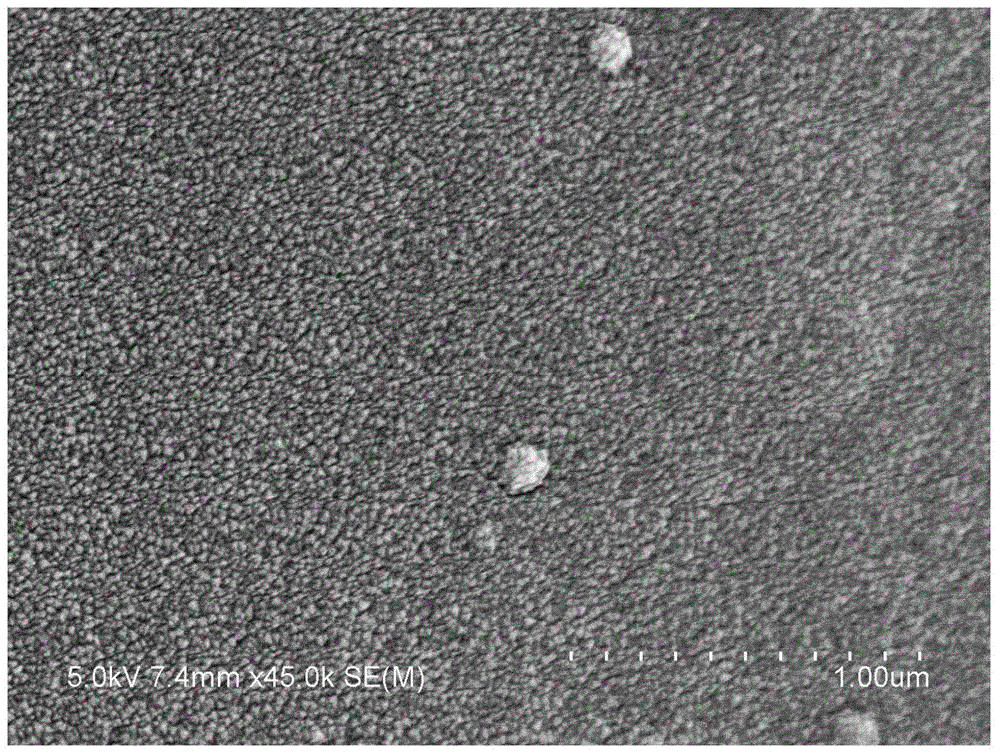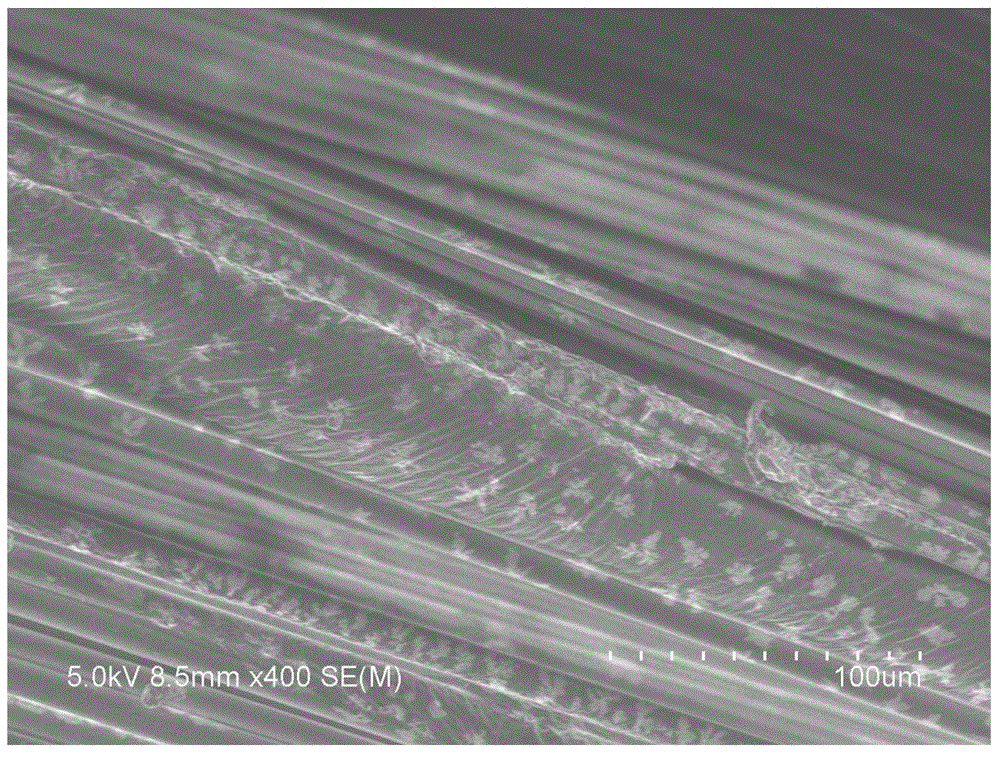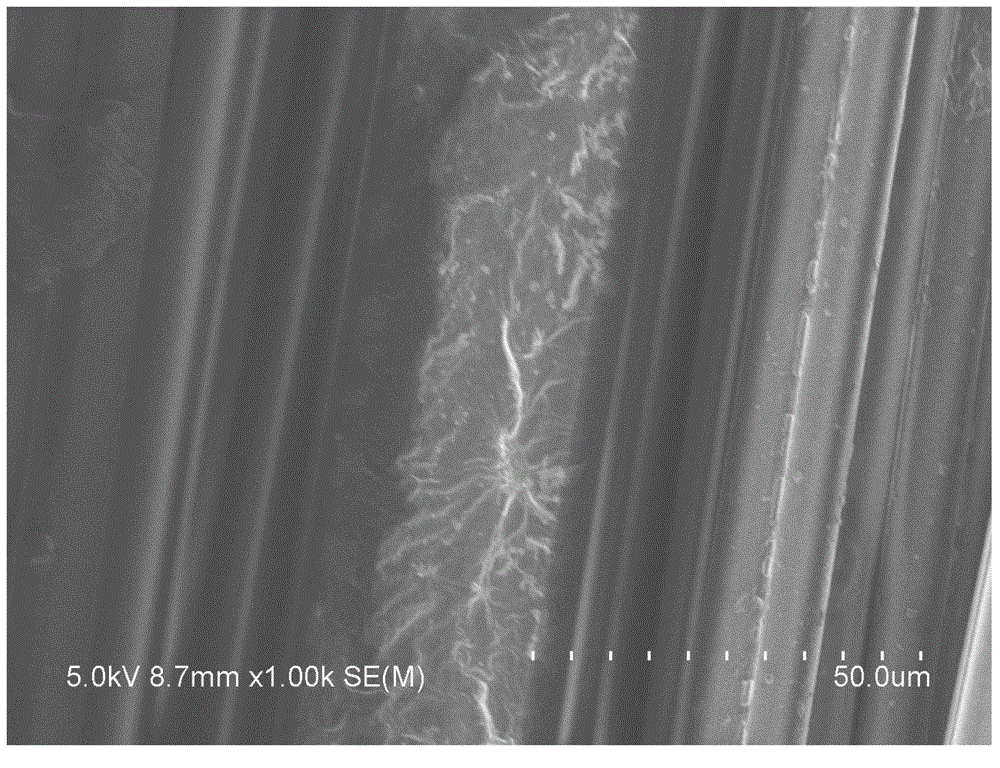Preparation method of flexible nanometer interface composite textile material
A composite material and nanotechnology, applied in chemical instruments and methods, metal material coating technology, ion implantation plating, etc. The effect of flexibility
- Summary
- Abstract
- Description
- Claims
- Application Information
AI Technical Summary
Problems solved by technology
Method used
Image
Examples
Embodiment 1
[0027] A method for preparing a flexible nano-interface textile composite material, comprising the following steps:
[0028] (1) The basalt non-weft cloth is cleaned and dried as the substrate, put into the magnetron sputtering device chamber, the reaction chamber is evacuated, and filled with high-purity argon as the reaction gas;
[0029] (2), use 99.99% metallic copper as the sputtering target material; Regulate pressure 0.5Pa, power 40W, gas flow rate 20sccm, sputter copper film on basalt non-weft cloth substrate, sputter 5min, obtain the single layer copper film Basalt non-woven fabric.
[0030] (3), immerse the basalt non-weft cloth with metal copper flexible film processed in step (2) in the boron phenolic resin solution according to the mass ratio of fabric and resin 4:6, and then place it in a ventilated place to dry for more than 1 day , to obtain prepreg cloth; cut the dried prepreg cloth into 20㎜×180㎜ size, put it in an oven at 110~120℃ for 30 minutes, then take i...
Embodiment 2
[0032] A method for preparing a flexible nano-interface textile composite material, comprising the following steps:
[0033] (1) The basalt non-weft cloth is cleaned and dried as the substrate, put into the magnetron sputtering device chamber, the reaction chamber is evacuated, and filled with high-purity argon as the reaction gas;
[0034] (2), use 99.99% metal oxide silicon dioxide as the target material; adjust the pressure 5Pa, power 50W, gas flow 40sccm, sputter the silicon dioxide film on the basalt non-weft cloth substrate, sputter 60min, obtain a single layer Basalt Laid Fabric with Silica Film.
[0035] (3), the basalt non-weft cloth with silicon dioxide flexible film treated by step (2) is immersed in the boron phenolic resin solution according to the mass ratio of fabric and resin 4:6, and then placed in a ventilated place to dry for 1 day As above, a prepreg was obtained. Cut the dried prepreg fabric into 20㎜×180㎜ size, put it in an oven at 110~120℃ for pre-bakin...
Embodiment 3
[0037] A method for preparing a flexible nano-interface textile composite material, comprising the following steps:
[0038] (1) The basalt non-weft cloth is cleaned and dried as the substrate, put into the magnetron sputtering device chamber, the reaction chamber is evacuated, and filled with high-purity argon as the reaction gas;
[0039] (2), use 99.99% metal copper as the sputtering target material; Regulate pressure 1Pa, power 70W, gas flow 40sccm, sputter copper film on the basalt non-weft cloth substrate, sputter 30min, obtain the basalt with single-layer copper film No weft.
[0040] (3), immerse the basalt non-weft cloth with metal copper flexible film processed in step (2) in the boron phenolic resin solution according to the mass ratio of fabric and resin 4:6, and then place it in a ventilated place to dry for more than 1 day , to obtain prepreg cloth; cut the dried prepreg cloth into 20㎜×180㎜ size, put it in an oven at 110~120℃ for 30 minutes, then take it out, and ...
PUM
| Property | Measurement | Unit |
|---|---|---|
| flexural strength | aaaaa | aaaaa |
| tensile strength | aaaaa | aaaaa |
| flexural strength | aaaaa | aaaaa |
Abstract
Description
Claims
Application Information
 Login to View More
Login to View More - R&D
- Intellectual Property
- Life Sciences
- Materials
- Tech Scout
- Unparalleled Data Quality
- Higher Quality Content
- 60% Fewer Hallucinations
Browse by: Latest US Patents, China's latest patents, Technical Efficacy Thesaurus, Application Domain, Technology Topic, Popular Technical Reports.
© 2025 PatSnap. All rights reserved.Legal|Privacy policy|Modern Slavery Act Transparency Statement|Sitemap|About US| Contact US: help@patsnap.com



